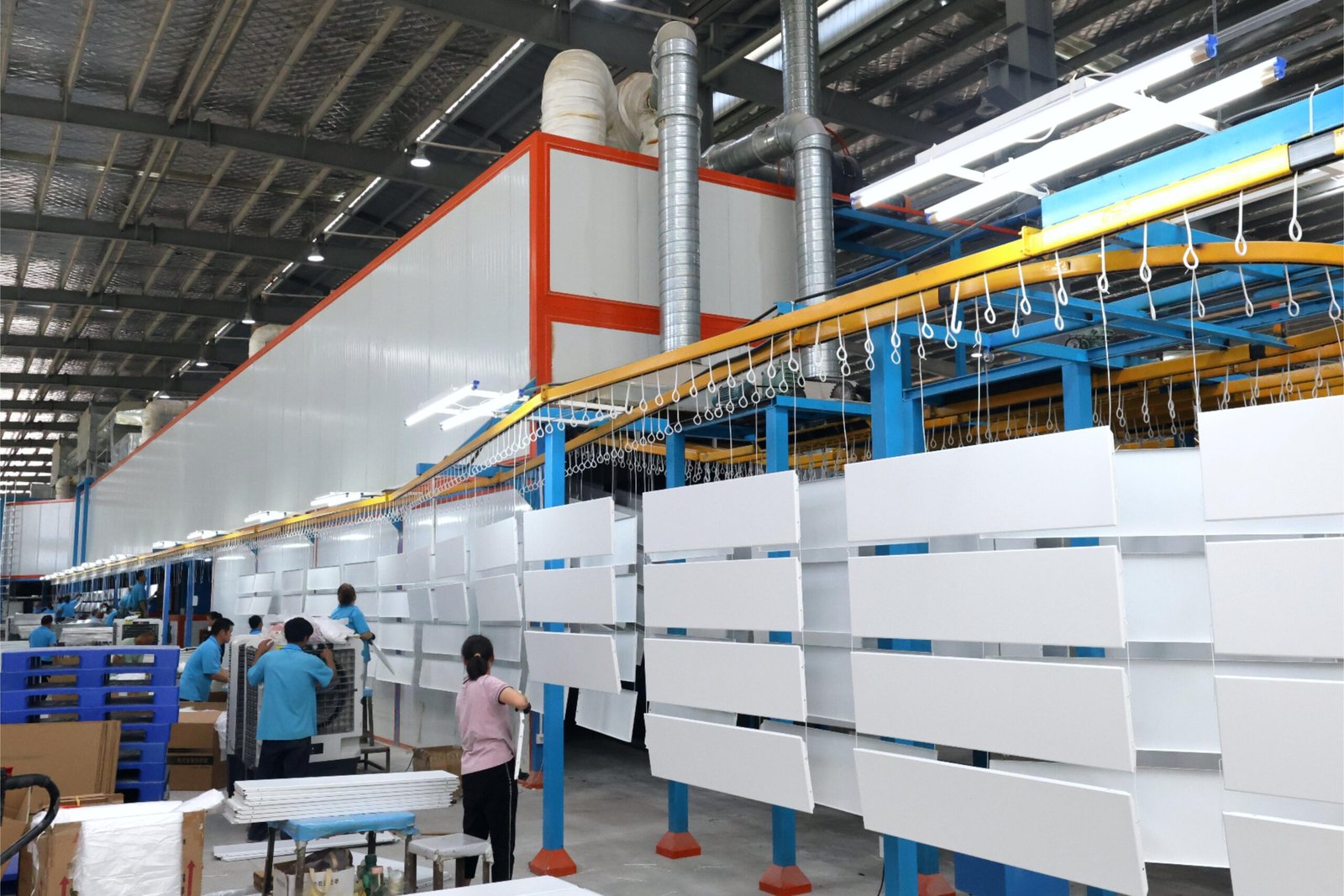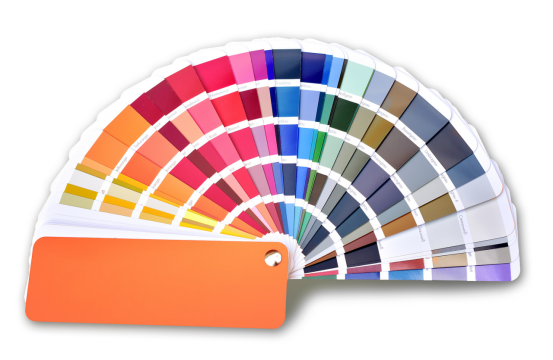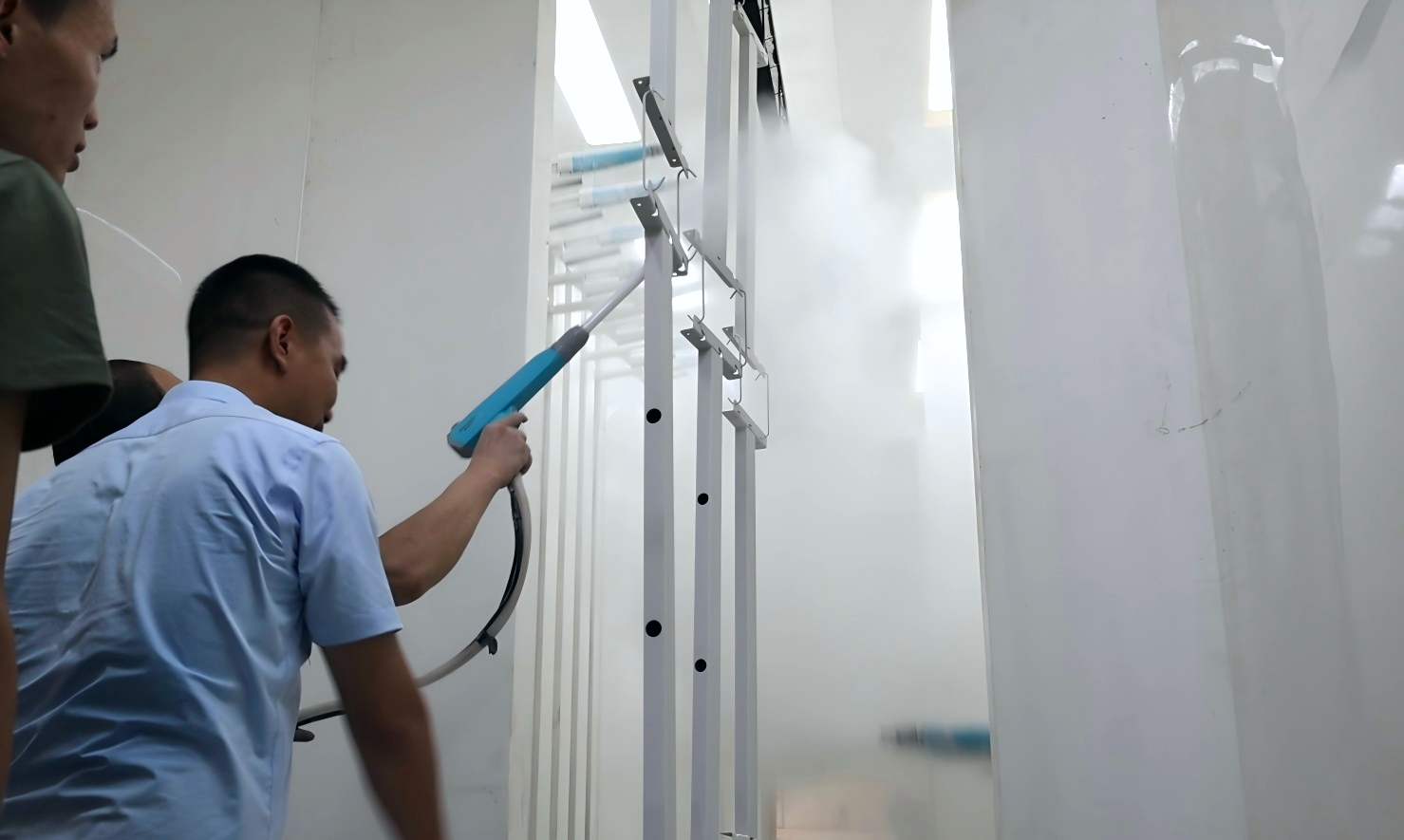How to Effectively Improve the Productivity of Spray Coating Lines?

Productivity bottlenecks killing your coating output?
Improving the productivity of spray coating lines starts with assessing every detail—from people to process to equipment—and building a system that runs with speed and precision.
This guide lays out clear, actionable strategies you can implement to increase efficiency and output without sacrificing quality.
Conduct a Thorough Assessment of Current Processes?

Struggling with inconsistent output or frequent delays?
Start by evaluating your current spray coating line for process inefficiencies, equipment downtime, and operator errors.
Use production logs to pinpoint common delays—whether they come from manual slowdowns, supply chain interruptions, or technical malfunctions.
Dive deeper:
A complete assessment should map out the full workflow—from part preparation, coating, curing, to packaging. At each stage, document who’s doing what, how long it takes, and where wait times build up.
Make sure to:
- Interview operators about pain points
- Review maintenance records
- Measure material usage versus waste
- Calculate effective spray time versus idle time
By identifying where time and resources are lost, you can build a roadmap to fix the inefficiencies holding your team back.
Invest in High-Quality Equipment?
Outdated tools slowing you down?
Modernizing your equipment directly improves coating quality, application speed, and uptime.
Upgrade areas like:
- Spray guns and nozzles: Improve atomization and reduce overspray
- Booths and filtration: Ensure even airflow and consistent environments
- Curing ovens: Faster, more uniform heat means quicker throughput
Consider robotics:
Automated arms reduce variability and allow you to coat more parts per shift, especially on complex or high-volume jobs.
Long term, equipment upgrades reduce rework, downtime, and labor costs—three of the biggest barriers to productivity.
Implement Regular Maintenance Schedules?
Is breakdown repair eating into production time?
Preventive maintenance keeps your spray system reliable and ready—every day.
Set a regular schedule that includes:
- Cleaning filters and guns
- Lubricating moving parts
- Checking pressure gauges and flow sensors
- Inspecting cables, hoses, and booth internals
Train operators on simple diagnostics and emergency procedures to avoid waiting for technicians.
Tip: Use a checklist system or simple app to log daily, weekly, and monthly tasks. This discipline prevents small problems from becoming expensive shutdowns.
Optimize Spray Coating Techniques?
Even top-tier equipment won’t help if your operators use poor technique.
Train your staff to spray smarter—not harder.
Key technique basics:
- Maintain proper gun distance (6–12 inches)
- Use smooth, overlapping strokes
- Move parallel to the surface
- Adjust spray pattern to match part size
Hold regular workshops to:
- Practice on test panels
- Analyze technique errors like heavy spots, striping, or missed edges
- Tune settings for different coating types
Optimized technique means faster cycles, less material use, and fewer touch-ups.
Utilize High-Performance Coatings?
Is it taking too long to achieve coverage?
Choosing coatings with better flow, adhesion, and coverage rate reduces spray time and number of passes.
Look for:
- Fast-dry or UV-cured formulations
- Coatings with higher transfer efficiency
- Low-VOC or eco-friendly blends (for easier ventilation compliance)
Table: Comparison of Coating Performance
| Coating Type | Coverage Rate | Dry Time | Ideal Use |
|---|---|---|---|
| Standard Epoxy | Medium | 30–60 mins | Durable, low cost |
| High-Solid Poly | High | 10–20 mins | Speed, low VOC |
| UV-Cure Acrylic | Very High | Instant | Fast turnarounds |
Fewer coats = faster jobs = higher productivity.
Enhance Workflow and Layout?
Does your team waste time walking between stations?
A poorly planned layout adds invisible seconds—and those seconds add up fast.
Make your workflow lean:
- Position tools and supplies within arm’s reach
- Organize parts by batch or SKU
- Eliminate crossover paths between personnel
- Designate prep, spray, and cure zones clearly
Use lean manufacturing tools like:
- 5S (Sort, Set in order, Shine, Standardize, Sustain)
- Time-motion studies
- Kanban material flow
Cutting even 10 seconds per part could multiply into hours of regained productivity per day.
Monitor and Control Environmental Conditions?
Are climate swings ruining finish quality?
Spray environments need stable humidity, temperature, and air quality for consistent output.
Control these elements:
- Temperature: 20–25°C ideal for most powder/liquid coatings
- Humidity: 40–60% for fast and even curing
- Airflow: Balanced intake/exhaust to reduce overspray
Install real-time climate monitors. Add warning lights for out-of-range conditions so operators can pause before ruining parts.
Tip: Invest in better booth sealing and add dehumidifiers or localized heaters if you’re in an extreme climate.
Implement Real-Time Monitoring and Data Analysis?

Still making decisions based on guesswork?
Use real-time sensors and data dashboards to track spray performance, operator output, and system health.
Track these KPIs:
- Spray rate per shift
- Overspray percentage
- Downtime minutes per week
- Coating thickness and rejection rate
Data helps:
- Identify problems early
- Schedule maintenance before breakdowns
- Compare shift productivity
- Justify ROI for automation or training
Small data points add up to big productivity insights.
Focus on Training and Skill Development?
Is your team guessing instead of operating with confidence?
Training is the cheapest, fastest productivity upgrade you can make.
Cover:
- Spray technique (angle, flow, overlap)
- Equipment setup and shutdown
- Common defect diagnosis
- Daily maintenance routines
Use shadowing, video tutorials, and scorecards to coach improvement. Recognize top performers to build morale.
Cross-train staff to fill gaps during absences or peak demand. A flexible team keeps output steady—no matter what.
Conclusion
Spray coating productivity doesn’t improve on its own. It requires deliberate changes across equipment, training, workflow, and technique. Each improvement, even small ones, compound over time—delivering faster cycles, lower costs, and better product quality.
